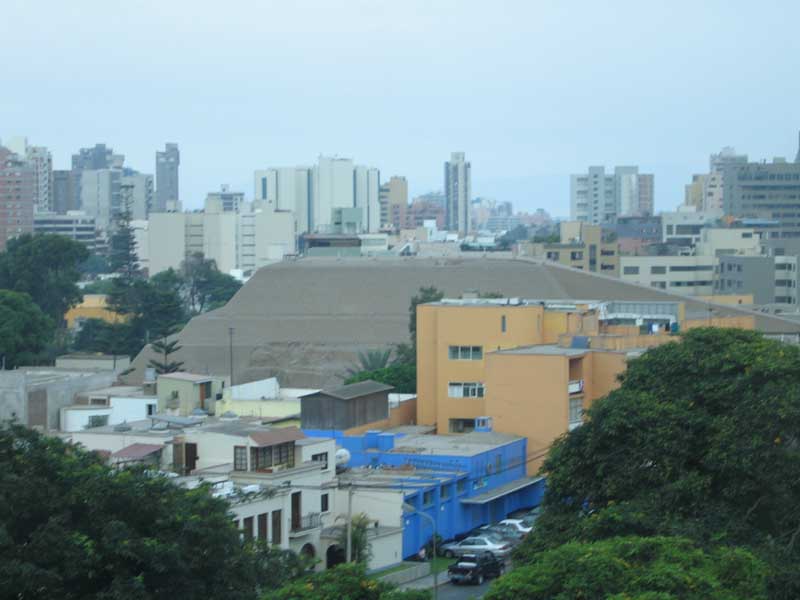
We woke up at 6:40 today, which seemed very late by comparison. We went down to eat breakfast at the buffet – it was very full. There were all kinds of fruits – pineapple, mango, strawberries, lychee, and many more. There was also bacon, ham, sausage, potatoes, eggs, and many other cooked foods. We didn't have room for any of the croissants, bagels, toasts or other breads. The buffet was closest to the giant buffets that we had all trip last year.

We drove over to the Lima airport – this is now the fifth time we've been here. It's quite nice once you get past the ticket agencies and security. We've noticed most of the airports here were designed for the security measures that we have in the US now, as opposed to what used to be in the US. Most of the shops and restaurants are past security, as opposed to before it. The whole airport is set up for no one except ticketed passengers to make it past security, so the main entry areas are quite large to account for all of the non-ticketed passengers.
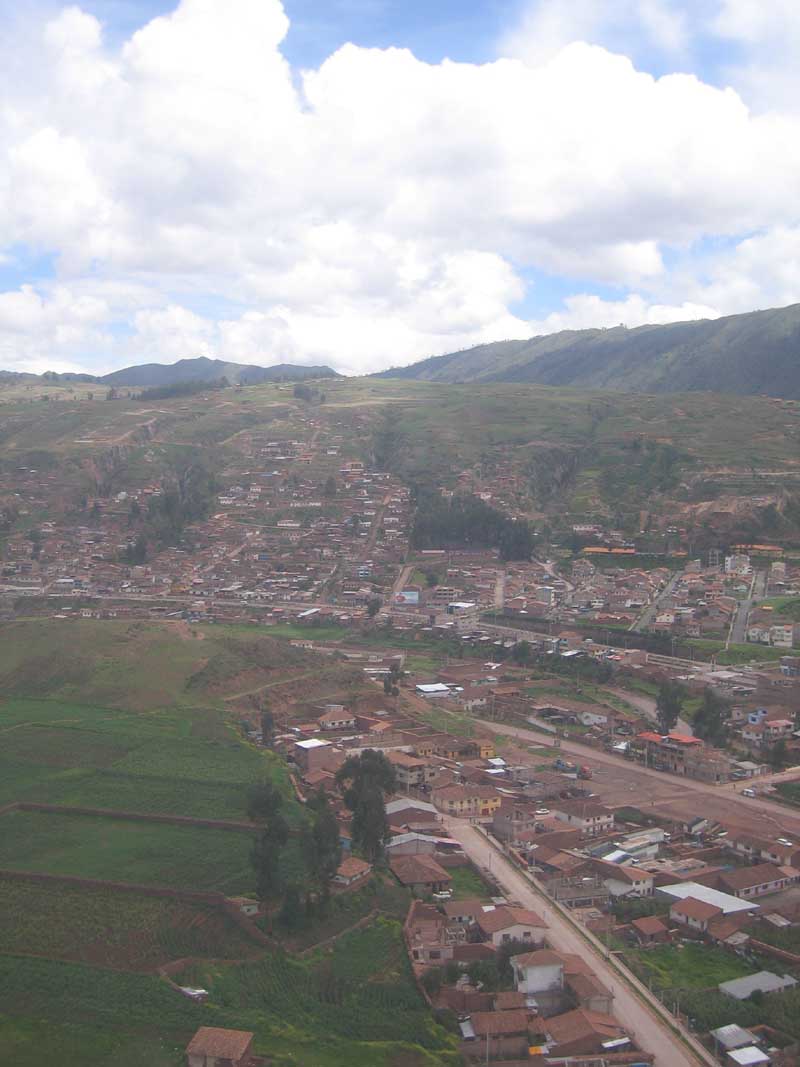
Similar to Iquitos, flights to Cusco are time-restricted, although with Cusco it is actually weather-related. Cusco is in a small bowl, surrounded by larger mountain peaks. To land, instead of flying straight in, you basically circle like water going down a drain, getting lower and lower once inside the bowl. This is not easy when it's clear, and very dangerous when cloudy. The clearest time of day is early in the morning, so that's when most all of the flights are. Later flights are routinely cancelled because of weather.
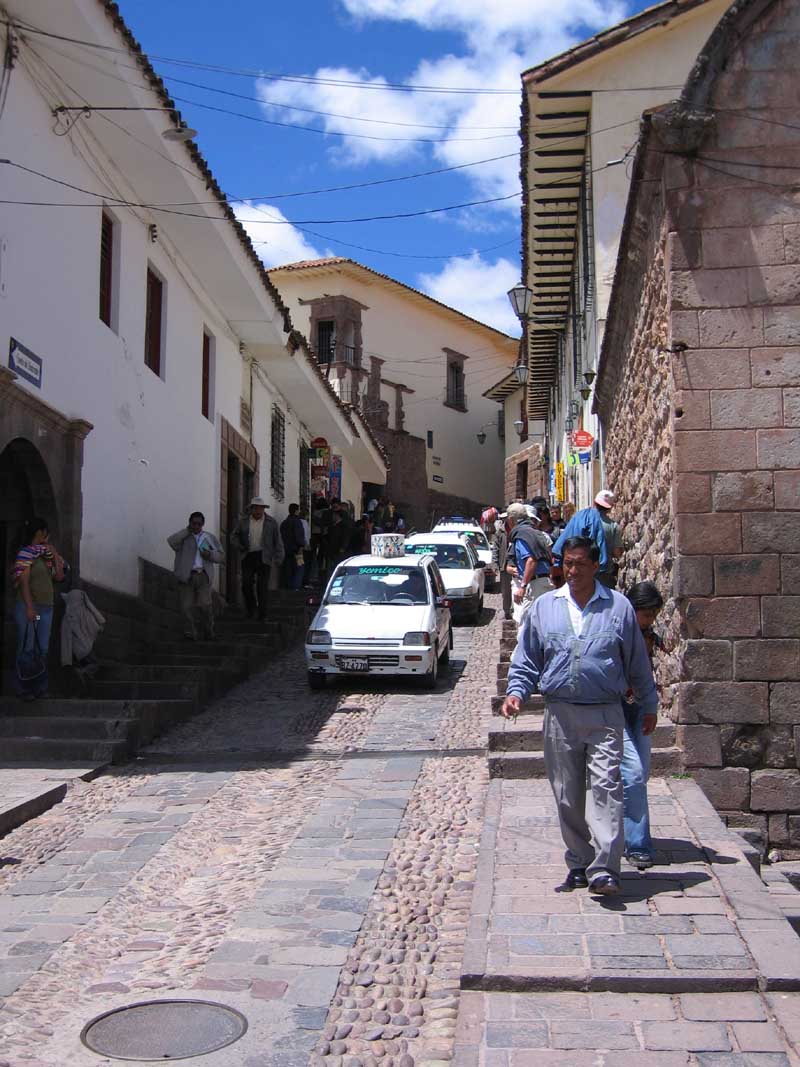
As soon as we got off the plain, it was clear that Cusco was a major tourist destination. There were people everywhere trying to sell everything under the sun – hotels, taxis, day-trips, trinkets, food, pretty much anything you can think of. We had about 10 people volunteer to take our luggage – we almost had to fight them off with a stick.
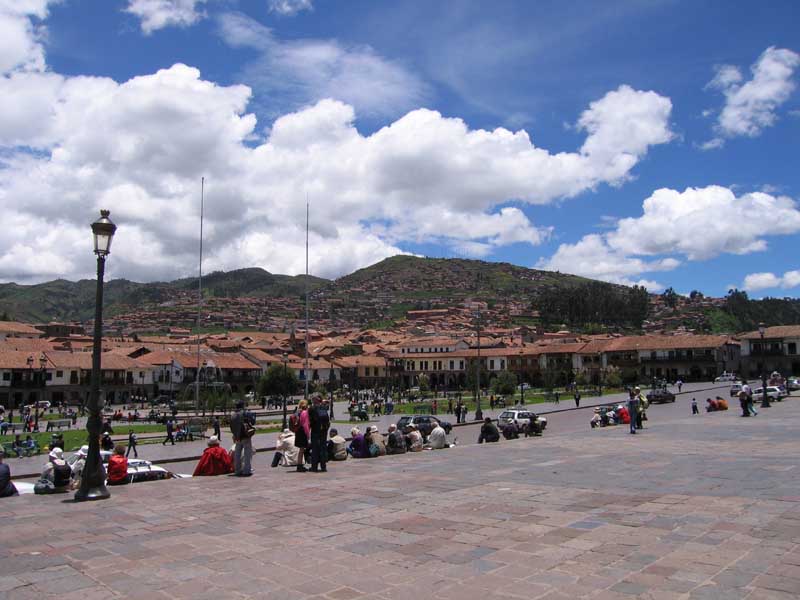
Our first news here was not good. We were told by Luis, our local tour director, that there was a strike planned for Wednesday, the day we were scheduled to leave for Machu Picchu . If the strike happened, we would have to make alternate arrangements. Given that Machu Picchu was the main place Crystal wanted to go, this did not sit well. On the drive to our hotel, Hotel Monasterio, we almost hit about a dozen pedestrians, including one that was about 1 step from getting tagged at a pretty decent rate of speed. There were people everywhere, the streets aren't that big, and the traffic was accordingly poor.
It was much more relaxed at the hotel itself. There were chanting monks being piped through the speaker system, and it really did seem a bit like a monastery. During the check-in process, they gave us some Coca tea. Coca is the plant from which cocaine (and the original Coca Cola) is derived, but in Peru the uses are not illicit. Coca has high levels of alkaloids, and people chew on the leaves to increase energy so that they can work longer (and harder) without tiring. Coca also helps with altitude sickness. It does not, however, taste very good. The tea didn't taste much different from hot water. We drank it to see if it would help with altitude sickness – turns out it didn't. Our room was nice, with the exception of the 6' door that Justin had to keep ducking at every entrance and exit.
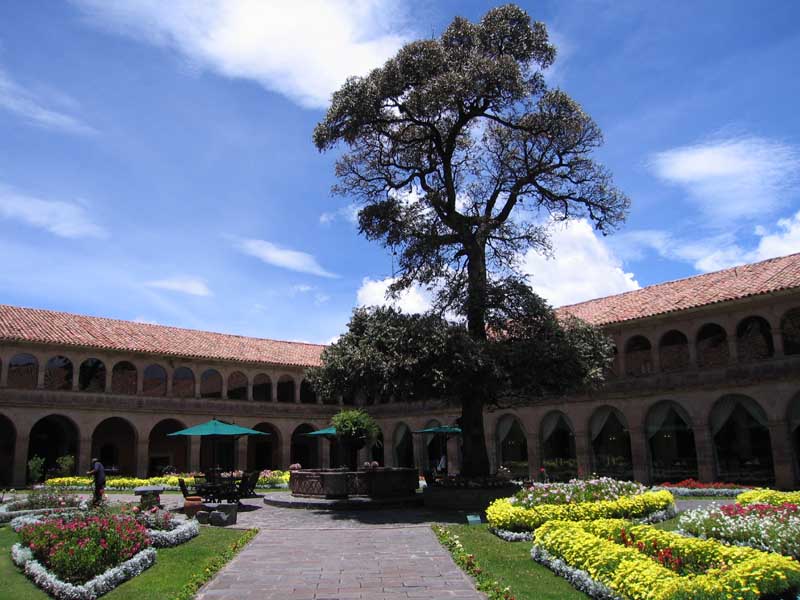
For lunch we went to a restaurant at the nearby Plaza de Armas, the Inka Grill. The food was very good, but we ate too much, against the recommendations of Luis. Our excursion started a little after we got back. We started by walking around a couple of the churches around Plaza de Armas. The first we went in, Catedral, was massive. It was basically three churches connected by some side hallways. One of the churches was very ornate, and gets used for weddings and other ceremonies. One of the churches was more toned down, and that one gets used daily for mass. The third was also ornate, but not as eclectic as the first. This church does not get used much. We also visited Iglesia de La Compania.
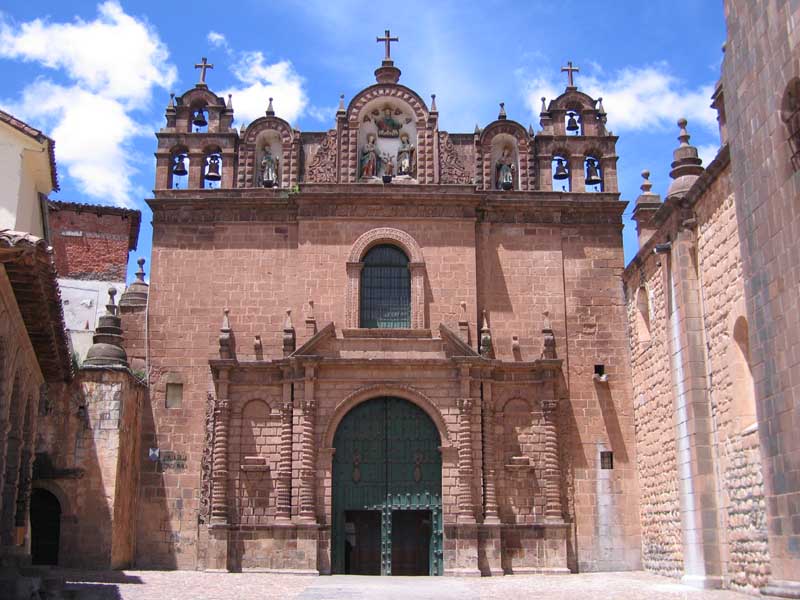
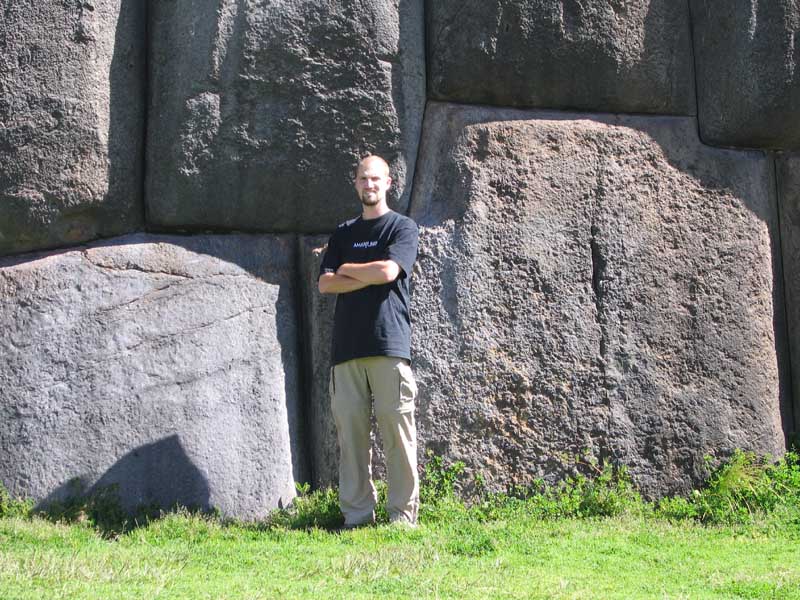
We then left the city and went up the hill to one of the larger Incan ruins of ancient Cusco – Sacsayhuaman, pronounced "Sexy Woman" with a thick European accent. The stonework here was incredible. There are large boulders, some of them weighing upwards of 100 tons, placed together like a giant puzzle, with no space between the boulders, and no mortar. There have been several large earthquakes in Cusco since Sacsayhuaman was built, but the stones have not budged. Also, the stones were not even local to the area – they were taken from a hill across the city. No one knows exactly how they got moved. While walking around Sacsayhuaman, we lost our breath a couple times. It wasn't that steep, but our lungs were not used to 11,000 foot air. Next we went to Qenqo, which was a spot for ceremonies including sacrifices. One of the altars was in a covered area where it is constantly dark and damp.
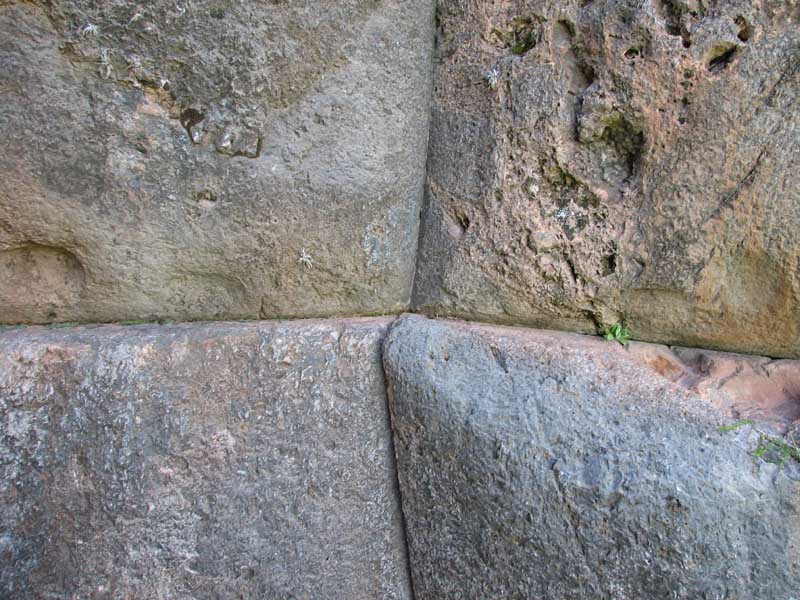
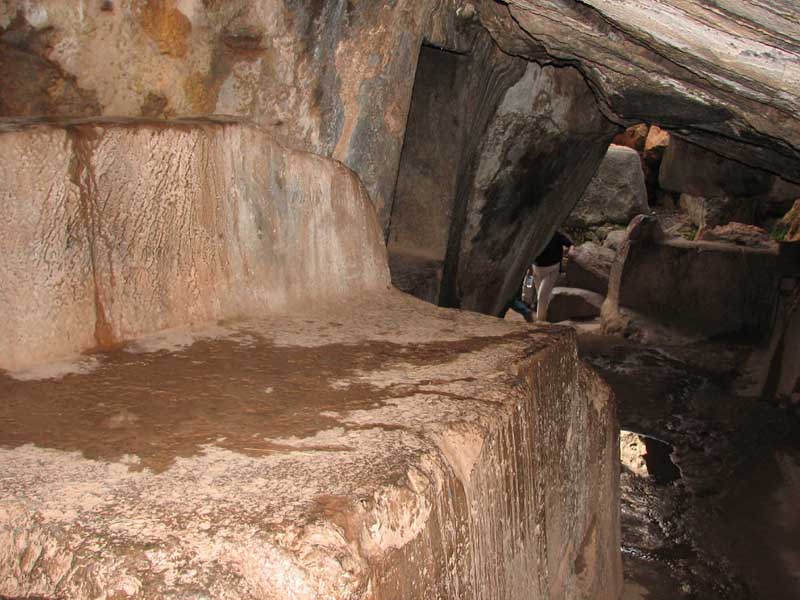
Back in the city, we visited a Spanish Cathedral, Santa Domingo, where a large 1950 earthquake uncovered an ancient Incan church. The Spanish had destroyed much of the ancient Incan church, and had then built their own church on top. The earthquake leveled the Spanish church, but uncovered the Incan foundation, which again was the expert stonework with the large carved stones. The Incans apparently were aware of the implications of earthquakes – all of the door openings and interior niches are trapezoidal shaped, as opposed to arches or squares. Also, the buildings themselves were trapezoidal shaped.


By the time we got back to the hotel, we weren't feeling that well, either because of lunch, because of altitude sickness, or because we contracted malaria. Whatever the case, we sat around and watched some television and caught a nap. We went to dinner, but still weren't feeling that well, so we finished quickly and went to sleep.
